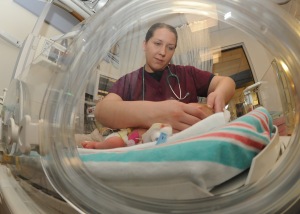The OpenLab project (http://openlabresearch.com/about) at the University of California Santa Cruz is led by Jennifer Parker, an associate professor of Art + Digital Arts New Media and Enrico Ramirez-Ruiz, an associate professor of Astronomy & Astrophysics. The project is supported by the National Science Foundation (NSF) (http://www.nsf.gov) and the National Aeronautics and Space Administration (NASA) (http://www.nasa.gov/), among others. OpenLab has been around for about two years.
Collaborators include organizations with related goals within and outside of the University of California system, working artists, scientists, environmental activists, M.D.s, graduate students, and most likely a few undergraduates as well. Projects range from an interactive sculpture/research on the topic of mass transfer in binary stars, to videos/research on the environmental impacts of latex balloons, to an iPad app for virtual group therapy for families with babies in intensive care (http://openlabresearch.com/archives/2774), to name a few.

SAN DIEGO (March 4, 2011) Lt. Lauren Mattingly, an intern in the Naval Medical Center San Diego Graduate Medical Education program, examines a newborn baby in the Neonatal Intensive Care Unit.
To give you an idea of the types of work possible through this program, the facilities used by the OpenLab Network include a foundry, a metal fabrication shop, a digital imaging lab, photo and print studios, wood shop, and a supercomputer lab for undergraduates, affectionately referred to as the SLUG. The performing arts also play a role.
Perhaps the important aspect of this project, one that sets it apart from many other science + art initiatives, is that the directors state a research purpose:
“Within this immersive environment, we will conduct research to acquire skills and knowledge that crosses disciplinary boundaries between science, education, and the arts while sharing expertise in collaborative research methodologies.
The following research questions will be investigated:
(1) How can we strengthen or create new methodologies that truly engage art and science thinking?
(2) Is an interdisciplinary laboratory space for cross-disciplinary and collaborative research more engaging and productive for students and faculty without these resources?“
We should all keep an eye out for the answers.

You must be logged in to post a comment.